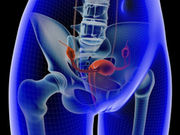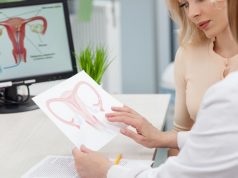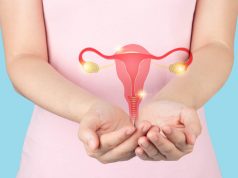Hysterectomy can be avoided in about two-thirds of uterine artery embolization-treated patients
TUESDAY, Dec. 13, 2016 (HealthDay News) — Hysterectomy can often be avoided in patients with uterine fibroids undergoing uterine artery embolization, according to a study published in the December issue of the American Journal of Obstetrics & Gynecology.
Annefleur M. de Bruijn, M.D., from the VU Medical Center in Amsterdam, and colleagues compared clinical outcomes and health-related quality of life 10 years after uterine embolization or hysterectomy in the treatment of heavy menstrual bleeding related to uterine fibroids. Patients with symptomatic uterine fibroids eligible for hysterectomy were randomized from 2002 to 2004 to uterine artery embolization (81 patients) or hysterectomy (75 patients).
The researchers found that five patients underwent secondary hysterectomy, resulting in a total of 35 percent (31 percent after successful uterine artery embolization). In all cases but one, secondary hysterectomies were performed for persisting symptoms. Health-related quality of life improved significantly after the initial treatment. Generic health-related quality of life remained stable after 10 years, without differences between the groups. There were decreases in both groups in the urogenital distress inventory and the defecation distress inventory, probably related to increasing age, with no significant between-group differences. Satisfaction remained comparable in both groups. Most patients reported being very satisfied with treatment received: 78 and 87 percent in the uterine artery embolization and hysterectomy groups, respectively.
“Uterine artery embolization is a well-documented and less invasive alternative to hysterectomy for symptomatic uterine fibroids on which eligible patients should be counseled,” the authors write.
The study was partially supported by Boston Scientific Corp.
Copyright © 2016 HealthDay. All rights reserved.








